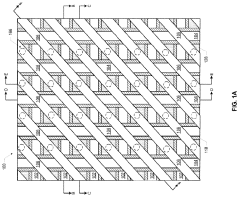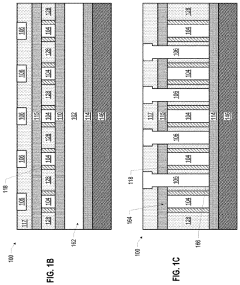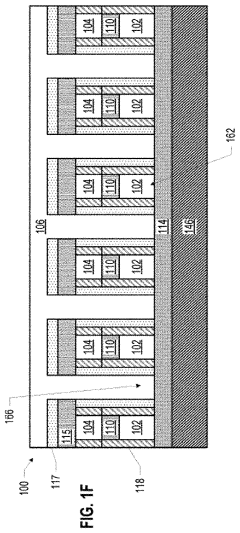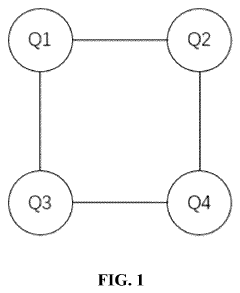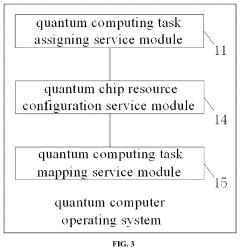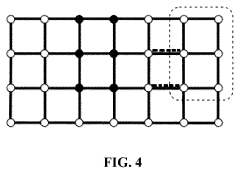Quantum Computing in Streamlining Educational Content Delivery Systems
JUL 17, 20259 MIN READ
Generate Your Research Report Instantly with AI Agent
Patsnap Eureka helps you evaluate technical feasibility & market potential.
Quantum Ed-Tech Evolution
The evolution of quantum computing in educational technology represents a paradigm shift in how we approach content delivery and learning systems. This technological advancement has progressed through several key stages, each marking significant improvements in the field of education.
In the early stages, quantum computing in education was largely theoretical, with researchers exploring potential applications. As quantum hardware became more accessible, educational institutions began experimenting with quantum algorithms for optimizing course scheduling and resource allocation. This phase demonstrated the potential for quantum computing to solve complex logistical problems in educational administration.
The next significant milestone came with the development of quantum machine learning algorithms. These algorithms showed promise in personalizing learning experiences by analyzing vast amounts of student data and predicting learning outcomes with unprecedented accuracy. This advancement allowed for the creation of adaptive learning systems that could tailor content delivery to individual student needs in real-time.
As quantum technologies matured, we saw the emergence of quantum-enhanced virtual and augmented reality systems for education. These systems leveraged quantum computing's ability to simulate complex scenarios, providing students with immersive learning experiences that were previously impossible. From molecular simulations in chemistry classes to historical reenactments in history lessons, quantum-powered VR/AR revolutionized the way students interact with educational content.
The integration of quantum computing with natural language processing marked another crucial stage in this evolution. Quantum NLP algorithms enabled the development of highly sophisticated language translation and comprehension systems, breaking down language barriers in global education and facilitating more effective communication between students and educators worldwide.
Most recently, we've witnessed the advent of quantum-based knowledge graphs and semantic networks. These systems utilize quantum computing's unique capabilities to create and navigate complex interconnected webs of information, allowing for more intuitive and efficient content discovery and knowledge synthesis. This development has significantly enhanced the way students and researchers access and correlate information across diverse fields of study.
Looking ahead, the trajectory of quantum computing in educational content delivery systems points towards even more transformative applications. We anticipate the development of quantum-powered cognitive models that can simulate human learning processes with unprecedented fidelity, leading to breakthroughs in understanding and enhancing cognitive development. Additionally, the integration of quantum computing with brain-computer interfaces holds the promise of direct knowledge transfer, potentially revolutionizing the very concept of learning and education as we know it.
In the early stages, quantum computing in education was largely theoretical, with researchers exploring potential applications. As quantum hardware became more accessible, educational institutions began experimenting with quantum algorithms for optimizing course scheduling and resource allocation. This phase demonstrated the potential for quantum computing to solve complex logistical problems in educational administration.
The next significant milestone came with the development of quantum machine learning algorithms. These algorithms showed promise in personalizing learning experiences by analyzing vast amounts of student data and predicting learning outcomes with unprecedented accuracy. This advancement allowed for the creation of adaptive learning systems that could tailor content delivery to individual student needs in real-time.
As quantum technologies matured, we saw the emergence of quantum-enhanced virtual and augmented reality systems for education. These systems leveraged quantum computing's ability to simulate complex scenarios, providing students with immersive learning experiences that were previously impossible. From molecular simulations in chemistry classes to historical reenactments in history lessons, quantum-powered VR/AR revolutionized the way students interact with educational content.
The integration of quantum computing with natural language processing marked another crucial stage in this evolution. Quantum NLP algorithms enabled the development of highly sophisticated language translation and comprehension systems, breaking down language barriers in global education and facilitating more effective communication between students and educators worldwide.
Most recently, we've witnessed the advent of quantum-based knowledge graphs and semantic networks. These systems utilize quantum computing's unique capabilities to create and navigate complex interconnected webs of information, allowing for more intuitive and efficient content discovery and knowledge synthesis. This development has significantly enhanced the way students and researchers access and correlate information across diverse fields of study.
Looking ahead, the trajectory of quantum computing in educational content delivery systems points towards even more transformative applications. We anticipate the development of quantum-powered cognitive models that can simulate human learning processes with unprecedented fidelity, leading to breakthroughs in understanding and enhancing cognitive development. Additionally, the integration of quantum computing with brain-computer interfaces holds the promise of direct knowledge transfer, potentially revolutionizing the very concept of learning and education as we know it.
Ed-Tech Market Analysis
The Ed-Tech market has experienced significant growth in recent years, driven by technological advancements and the increasing demand for digital learning solutions. The global Ed-Tech market size was valued at $89.49 billion in 2020 and is projected to reach $285.23 billion by 2027, growing at a CAGR of 18.1% from 2020 to 2027. This rapid expansion is fueled by the rising adoption of online learning platforms, mobile education applications, and the integration of advanced technologies such as artificial intelligence and virtual reality in educational content delivery systems.
The COVID-19 pandemic has accelerated the digital transformation of education, leading to a surge in demand for remote learning solutions and digital content. This shift has created new opportunities for Ed-Tech companies to innovate and expand their offerings. The market is witnessing a growing trend towards personalized learning experiences, adaptive learning technologies, and data-driven insights to improve educational outcomes.
In the context of quantum computing in streamlining educational content delivery systems, there is a nascent but promising market potential. While quantum computing is still in its early stages of development, its application in education could revolutionize content delivery by enabling more efficient data processing, complex simulations, and personalized learning algorithms. However, the current market for quantum computing in education is limited, primarily due to the technology's nascent state and high implementation costs.
The Ed-Tech market is highly fragmented, with numerous players ranging from startups to established technology giants. Key market segments include K-12 education, higher education, corporate training, and lifelong learning. North America currently dominates the global Ed-Tech market, followed by Europe and Asia-Pacific. However, emerging economies in Asia and Africa are expected to witness the highest growth rates in the coming years due to increasing internet penetration and government initiatives to promote digital education.
Challenges in the Ed-Tech market include concerns over data privacy and security, the digital divide, and the need for effective teacher training in new technologies. Additionally, the integration of quantum computing in educational content delivery systems faces hurdles such as the lack of quantum-ready infrastructure and the scarcity of skilled professionals in this field.
Despite these challenges, the potential for quantum computing to enhance educational content delivery systems presents a significant long-term opportunity. As quantum technologies mature and become more accessible, they could enable real-time, highly personalized learning experiences, optimize resource allocation in educational institutions, and facilitate breakthrough research in educational methodologies. This convergence of quantum computing and Ed-Tech could create a new market segment with substantial growth potential in the coming decades.
The COVID-19 pandemic has accelerated the digital transformation of education, leading to a surge in demand for remote learning solutions and digital content. This shift has created new opportunities for Ed-Tech companies to innovate and expand their offerings. The market is witnessing a growing trend towards personalized learning experiences, adaptive learning technologies, and data-driven insights to improve educational outcomes.
In the context of quantum computing in streamlining educational content delivery systems, there is a nascent but promising market potential. While quantum computing is still in its early stages of development, its application in education could revolutionize content delivery by enabling more efficient data processing, complex simulations, and personalized learning algorithms. However, the current market for quantum computing in education is limited, primarily due to the technology's nascent state and high implementation costs.
The Ed-Tech market is highly fragmented, with numerous players ranging from startups to established technology giants. Key market segments include K-12 education, higher education, corporate training, and lifelong learning. North America currently dominates the global Ed-Tech market, followed by Europe and Asia-Pacific. However, emerging economies in Asia and Africa are expected to witness the highest growth rates in the coming years due to increasing internet penetration and government initiatives to promote digital education.
Challenges in the Ed-Tech market include concerns over data privacy and security, the digital divide, and the need for effective teacher training in new technologies. Additionally, the integration of quantum computing in educational content delivery systems faces hurdles such as the lack of quantum-ready infrastructure and the scarcity of skilled professionals in this field.
Despite these challenges, the potential for quantum computing to enhance educational content delivery systems presents a significant long-term opportunity. As quantum technologies mature and become more accessible, they could enable real-time, highly personalized learning experiences, optimize resource allocation in educational institutions, and facilitate breakthrough research in educational methodologies. This convergence of quantum computing and Ed-Tech could create a new market segment with substantial growth potential in the coming decades.
Quantum Computing Challenges
Despite the immense potential of quantum computing in revolutionizing various sectors, including education, several significant challenges hinder its widespread adoption and implementation in streamlining educational content delivery systems. One of the primary obstacles is the inherent complexity of quantum systems. Quantum computers operate on principles of quantum mechanics, which are fundamentally different from classical computing paradigms. This complexity makes it difficult for educators and content developers to understand and utilize quantum algorithms effectively in educational contexts.
Another major challenge is the current limitations in quantum hardware. Existing quantum computers are still in their infancy, with limited qubit counts and high error rates. These constraints restrict the scale and complexity of problems that can be solved using quantum computing, potentially limiting its immediate applicability in large-scale educational content delivery systems. Additionally, quantum computers require extremely low temperatures and highly controlled environments to operate, making them impractical for widespread deployment in educational institutions.
The lack of standardization in quantum computing platforms and programming languages poses another significant hurdle. Unlike classical computing, where standardized programming languages and development environments are well-established, quantum computing lacks a unified approach. This fragmentation makes it challenging to develop and maintain quantum applications for educational content delivery across different quantum hardware platforms.
Quantum decoherence and error correction remain critical challenges in quantum computing. Quantum states are extremely fragile and susceptible to environmental interference, leading to errors in computations. While error correction techniques exist, they require a significant overhead of additional qubits, further limiting the practical capabilities of current quantum systems in handling complex educational content delivery tasks.
The scarcity of quantum computing expertise in the education sector is another substantial barrier. There is a significant skills gap between quantum physicists and computer scientists on one side, and educators and instructional designers on the other. This gap makes it difficult to translate the potential of quantum computing into practical applications for educational content delivery.
Lastly, the high cost associated with quantum computing technology presents a significant challenge for its integration into educational systems. The development, maintenance, and operation of quantum computers require substantial financial investments, which may be prohibitive for many educational institutions, especially in resource-constrained environments.
Another major challenge is the current limitations in quantum hardware. Existing quantum computers are still in their infancy, with limited qubit counts and high error rates. These constraints restrict the scale and complexity of problems that can be solved using quantum computing, potentially limiting its immediate applicability in large-scale educational content delivery systems. Additionally, quantum computers require extremely low temperatures and highly controlled environments to operate, making them impractical for widespread deployment in educational institutions.
The lack of standardization in quantum computing platforms and programming languages poses another significant hurdle. Unlike classical computing, where standardized programming languages and development environments are well-established, quantum computing lacks a unified approach. This fragmentation makes it challenging to develop and maintain quantum applications for educational content delivery across different quantum hardware platforms.
Quantum decoherence and error correction remain critical challenges in quantum computing. Quantum states are extremely fragile and susceptible to environmental interference, leading to errors in computations. While error correction techniques exist, they require a significant overhead of additional qubits, further limiting the practical capabilities of current quantum systems in handling complex educational content delivery tasks.
The scarcity of quantum computing expertise in the education sector is another substantial barrier. There is a significant skills gap between quantum physicists and computer scientists on one side, and educators and instructional designers on the other. This gap makes it difficult to translate the potential of quantum computing into practical applications for educational content delivery.
Lastly, the high cost associated with quantum computing technology presents a significant challenge for its integration into educational systems. The development, maintenance, and operation of quantum computers require substantial financial investments, which may be prohibitive for many educational institutions, especially in resource-constrained environments.
Current Quantum Solutions
01 Quantum Circuit Optimization
Techniques for optimizing quantum circuits to improve efficiency and reduce computational complexity. This includes methods for reducing the number of gates, minimizing qubit usage, and streamlining quantum algorithms to enhance overall performance of quantum computations.- Quantum Circuit Optimization: Techniques for optimizing quantum circuits to improve efficiency and reduce computational complexity. This includes methods for reducing the number of quantum gates, minimizing qubit usage, and streamlining quantum algorithms to enhance overall performance of quantum computations.
- Quantum-Classical Hybrid Computing: Integration of quantum and classical computing systems to leverage the strengths of both paradigms. This approach involves developing algorithms and architectures that efficiently distribute computational tasks between quantum and classical processors, optimizing resource allocation and enhancing overall system performance.
- Error Correction and Mitigation: Advanced techniques for detecting, correcting, and mitigating errors in quantum computations. This includes the development of quantum error correction codes, fault-tolerant quantum computing methods, and noise reduction strategies to improve the reliability and accuracy of quantum operations.
- Quantum Algorithm Acceleration: Methods for accelerating quantum algorithms to achieve faster execution times and improved performance. This involves optimizing quantum circuit designs, developing new quantum gates, and creating efficient quantum subroutines to speed up various quantum computational tasks.
- Quantum Resource Management: Efficient management and allocation of quantum computing resources, including qubits, quantum gates, and classical control systems. This encompasses techniques for optimizing qubit connectivity, minimizing decoherence effects, and maximizing the utilization of quantum hardware to enhance overall system performance and scalability.
02 Quantum Error Correction and Mitigation
Advanced strategies for detecting, correcting, and mitigating errors in quantum computations. These approaches aim to improve the reliability and stability of quantum systems, enabling more robust and accurate quantum processing.Expand Specific Solutions03 Quantum-Classical Hybrid Algorithms
Development of algorithms that leverage both quantum and classical computing resources. These hybrid approaches aim to optimize problem-solving by utilizing the strengths of both quantum and classical systems, potentially leading to more efficient solutions for complex computational tasks.Expand Specific Solutions04 Quantum Machine Learning Optimization
Techniques for enhancing quantum machine learning algorithms and models. This includes methods for improving data encoding, feature extraction, and model training in quantum systems, potentially leading to faster and more accurate machine learning applications.Expand Specific Solutions05 Quantum Hardware Architecture Improvements
Advancements in quantum hardware design and architecture to enhance the performance and scalability of quantum systems. This includes innovations in qubit connectivity, control systems, and integration with classical computing infrastructure to streamline quantum computations.Expand Specific Solutions
Key Quantum Ed-Tech Players
The quantum computing landscape in educational content delivery systems is in its early stages, with significant potential for growth. The market is relatively small but expanding rapidly as educational institutions and tech companies explore quantum applications. While the technology is not yet mature, major players like Google, IBM, and D-Wave Systems are making strides in quantum computing research and development. Emerging companies such as Origin Quantum and QuantumCTek are also contributing to the field. Universities like MIT and the University of Chicago are actively involved in quantum research, potentially influencing future educational applications. As the technology evolves, we can expect increased integration of quantum computing in educational content delivery, offering enhanced personalization and efficiency in learning systems.
Google LLC
Technical Solution: Google's approach to quantum computing in educational content delivery systems leverages its Sycamore quantum processor and TensorFlow Quantum framework. The company has developed quantum machine learning algorithms that can potentially optimize content recommendation and personalization in educational platforms. Google's system utilizes quantum circuits to process complex datasets, enabling more efficient analysis of student learning patterns and preferences[1]. The quantum-enhanced algorithms can potentially reduce the computational time for content matching and adaptive learning systems, allowing for near real-time personalization of educational materials[3]. Google is also exploring quantum error correction techniques to improve the reliability of quantum computations in educational applications, which is crucial for maintaining consistent performance in content delivery systems[5].
Strengths: Advanced quantum hardware and software integration, vast data processing capabilities, and potential for rapid personalization. Weaknesses: Still in early stages of practical application, requires significant infrastructure investment, and faces challenges in quantum error correction for long-term stability.
D-Wave Systems, Inc.
Technical Solution: D-Wave Systems focuses on quantum annealing technology for optimizing educational content delivery. Their approach utilizes quantum annealing to solve complex optimization problems in content scheduling and resource allocation within educational platforms. D-Wave's quantum computers, such as the Advantage system, can potentially process vast combinations of learning materials and student data to determine optimal content delivery strategies[2]. The company has developed hybrid quantum-classical algorithms that can enhance the efficiency of content recommendation systems, potentially reducing the time required for personalized learning path generation[4]. D-Wave's quantum annealing technology is particularly suited for solving combinatorial optimization problems, which could be applied to optimize course schedules, resource distribution, and content sequencing in large-scale educational systems[6].
Strengths: Specialized in quantum annealing for optimization problems, potential for solving complex scheduling issues in education. Weaknesses: Limited to specific types of optimization problems, may require adaptation of existing educational algorithms to fit quantum annealing paradigm.
Core Quantum Ed-Tech Innovations
Apparatus and method for efficient and scalable quantum instruction implementation for a high sensitivity silicon spin qubit readout
PatentPendingUS20230196176A1
Innovation
- The integration of a direct digital synthesis (DDS) core within the processor to dynamically synthesize waveforms for qubit control, reducing memory overhead and enabling advanced compiler optimizations, adaptive qubit readout with auto-calibration, and programmable adiabatic pulse synthesis for efficient qubit control, allowing for real-time waveform generation and reduced calibration time.
Quantum computer operating system and quantum computer
PatentPendingUS20240134711A1
Innovation
- A quantum computer operating system that employs community detection and greedy algorithms to dynamically partition free qubits on a quantum chip, optimizing the mapping of tasks based on reward functions that consider qubit topological structure, coherence time, and feedback lines, ensuring efficient resource utilization and minimizing crosstalk.
Quantum Ed-Tech Integration
The integration of quantum computing into educational technology represents a paradigm shift in content delivery systems. This convergence has the potential to revolutionize how educational materials are processed, personalized, and distributed to learners across various platforms. Quantum computing's ability to handle complex calculations and vast datasets at unprecedented speeds opens up new possibilities for adaptive learning algorithms and real-time content optimization.
One of the primary areas where quantum ed-tech integration shows promise is in the development of highly sophisticated recommendation systems. These systems can analyze learner behavior, preferences, and performance data at a granular level, enabling the creation of truly personalized learning paths. By leveraging quantum algorithms, educational platforms can process multidimensional data sets to identify patterns and correlations that traditional computing methods might miss, resulting in more accurate and effective content recommendations.
Furthermore, quantum computing can enhance the efficiency of content creation and curation processes. By utilizing quantum machine learning techniques, educational institutions and content providers can automate the generation of diverse learning materials tailored to individual student needs. This approach not only saves time and resources but also ensures that the content remains relevant and engaging for each learner.
The integration of quantum computing also holds promise for improving the scalability and responsiveness of educational content delivery systems. Quantum-powered cloud infrastructures can handle massive amounts of simultaneous user requests, ensuring seamless content delivery even during peak usage periods. This capability is particularly crucial for supporting large-scale online learning initiatives and massive open online courses (MOOCs).
Additionally, quantum encryption techniques can be employed to enhance the security and privacy of educational data. As the education sector increasingly relies on digital platforms, protecting sensitive student information becomes paramount. Quantum key distribution and other quantum-based security measures can provide an unprecedented level of data protection, safeguarding both learner privacy and institutional intellectual property.
However, the successful integration of quantum computing in educational technology faces several challenges. The complexity of quantum systems requires specialized expertise, which may not be readily available in many educational institutions. Moreover, the cost of quantum hardware and infrastructure remains prohibitively high for widespread adoption. As the technology matures and becomes more accessible, these barriers are expected to diminish, paving the way for broader implementation in the ed-tech sector.
One of the primary areas where quantum ed-tech integration shows promise is in the development of highly sophisticated recommendation systems. These systems can analyze learner behavior, preferences, and performance data at a granular level, enabling the creation of truly personalized learning paths. By leveraging quantum algorithms, educational platforms can process multidimensional data sets to identify patterns and correlations that traditional computing methods might miss, resulting in more accurate and effective content recommendations.
Furthermore, quantum computing can enhance the efficiency of content creation and curation processes. By utilizing quantum machine learning techniques, educational institutions and content providers can automate the generation of diverse learning materials tailored to individual student needs. This approach not only saves time and resources but also ensures that the content remains relevant and engaging for each learner.
The integration of quantum computing also holds promise for improving the scalability and responsiveness of educational content delivery systems. Quantum-powered cloud infrastructures can handle massive amounts of simultaneous user requests, ensuring seamless content delivery even during peak usage periods. This capability is particularly crucial for supporting large-scale online learning initiatives and massive open online courses (MOOCs).
Additionally, quantum encryption techniques can be employed to enhance the security and privacy of educational data. As the education sector increasingly relies on digital platforms, protecting sensitive student information becomes paramount. Quantum key distribution and other quantum-based security measures can provide an unprecedented level of data protection, safeguarding both learner privacy and institutional intellectual property.
However, the successful integration of quantum computing in educational technology faces several challenges. The complexity of quantum systems requires specialized expertise, which may not be readily available in many educational institutions. Moreover, the cost of quantum hardware and infrastructure remains prohibitively high for widespread adoption. As the technology matures and becomes more accessible, these barriers are expected to diminish, paving the way for broader implementation in the ed-tech sector.
Ethical Quantum Ed-Tech Use
The integration of quantum computing in educational content delivery systems raises significant ethical considerations that must be carefully addressed. As this technology advances, it is crucial to establish a framework for responsible and ethical use to ensure equitable access, protect privacy, and maintain the integrity of educational processes.
One primary ethical concern is the potential for quantum-enhanced educational systems to exacerbate existing inequalities in access to education. While quantum computing could dramatically improve the efficiency and personalization of content delivery, there is a risk that only well-funded institutions or affluent students would benefit from these advancements. To mitigate this, policymakers and educational leaders must work towards ensuring equitable distribution of quantum-enhanced educational resources across diverse socioeconomic backgrounds.
Privacy and data protection present another critical ethical challenge. Quantum computing's ability to process vast amounts of data could lead to unprecedented levels of student profiling and tracking. This raises concerns about data ownership, consent, and the potential misuse of sensitive information. Implementing robust data governance frameworks and encryption methods specifically designed for quantum systems is essential to safeguard student privacy and maintain trust in educational institutions.
The use of quantum algorithms in content delivery also introduces questions of transparency and accountability. As these systems become more complex, it may become increasingly difficult for educators and students to understand how educational content is being curated and delivered. This lack of transparency could lead to biases in learning materials or the perpetuation of certain ideologies without proper scrutiny. Developing explainable AI techniques for quantum systems and establishing clear guidelines for algorithmic transparency in education are crucial steps in addressing this issue.
Furthermore, the potential for quantum computing to dramatically enhance adaptive learning systems raises ethical questions about the balance between personalization and standardization in education. While tailored learning experiences can benefit individual students, there is a risk of creating educational "filter bubbles" that limit exposure to diverse perspectives and ideas. Educators and policymakers must carefully consider how to maintain a balance between personalized learning and the broader goals of education, including critical thinking and exposure to varied viewpoints.
Lastly, the ethical use of quantum computing in education must consider the long-term implications for human cognition and learning processes. As systems become more advanced, there is a risk of over-reliance on technology, potentially diminishing certain cognitive skills or altering the fundamental nature of learning. Ongoing research into the cognitive effects of quantum-enhanced educational tools and the development of guidelines for their appropriate use are essential to ensure that these technologies enhance rather than replace human learning capabilities.
One primary ethical concern is the potential for quantum-enhanced educational systems to exacerbate existing inequalities in access to education. While quantum computing could dramatically improve the efficiency and personalization of content delivery, there is a risk that only well-funded institutions or affluent students would benefit from these advancements. To mitigate this, policymakers and educational leaders must work towards ensuring equitable distribution of quantum-enhanced educational resources across diverse socioeconomic backgrounds.
Privacy and data protection present another critical ethical challenge. Quantum computing's ability to process vast amounts of data could lead to unprecedented levels of student profiling and tracking. This raises concerns about data ownership, consent, and the potential misuse of sensitive information. Implementing robust data governance frameworks and encryption methods specifically designed for quantum systems is essential to safeguard student privacy and maintain trust in educational institutions.
The use of quantum algorithms in content delivery also introduces questions of transparency and accountability. As these systems become more complex, it may become increasingly difficult for educators and students to understand how educational content is being curated and delivered. This lack of transparency could lead to biases in learning materials or the perpetuation of certain ideologies without proper scrutiny. Developing explainable AI techniques for quantum systems and establishing clear guidelines for algorithmic transparency in education are crucial steps in addressing this issue.
Furthermore, the potential for quantum computing to dramatically enhance adaptive learning systems raises ethical questions about the balance between personalization and standardization in education. While tailored learning experiences can benefit individual students, there is a risk of creating educational "filter bubbles" that limit exposure to diverse perspectives and ideas. Educators and policymakers must carefully consider how to maintain a balance between personalized learning and the broader goals of education, including critical thinking and exposure to varied viewpoints.
Lastly, the ethical use of quantum computing in education must consider the long-term implications for human cognition and learning processes. As systems become more advanced, there is a risk of over-reliance on technology, potentially diminishing certain cognitive skills or altering the fundamental nature of learning. Ongoing research into the cognitive effects of quantum-enhanced educational tools and the development of guidelines for their appropriate use are essential to ensure that these technologies enhance rather than replace human learning capabilities.
Unlock deeper insights with Patsnap Eureka Quick Research — get a full tech report to explore trends and direct your research. Try now!
Generate Your Research Report Instantly with AI Agent
Supercharge your innovation with Patsnap Eureka AI Agent Platform!
